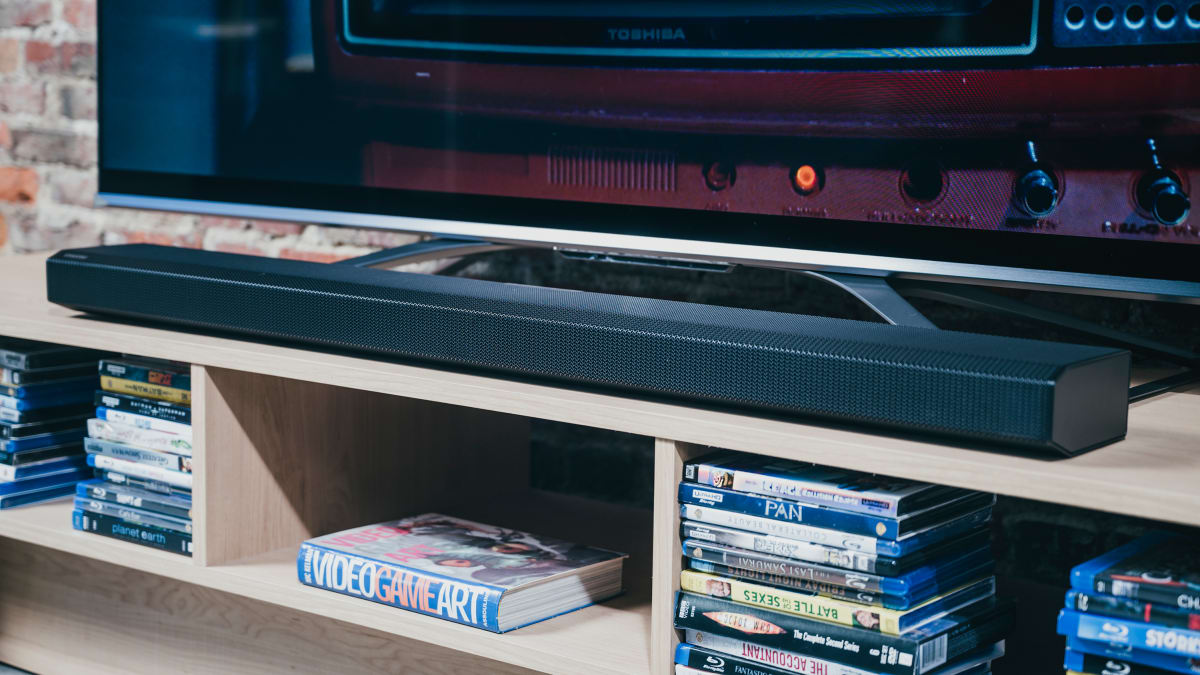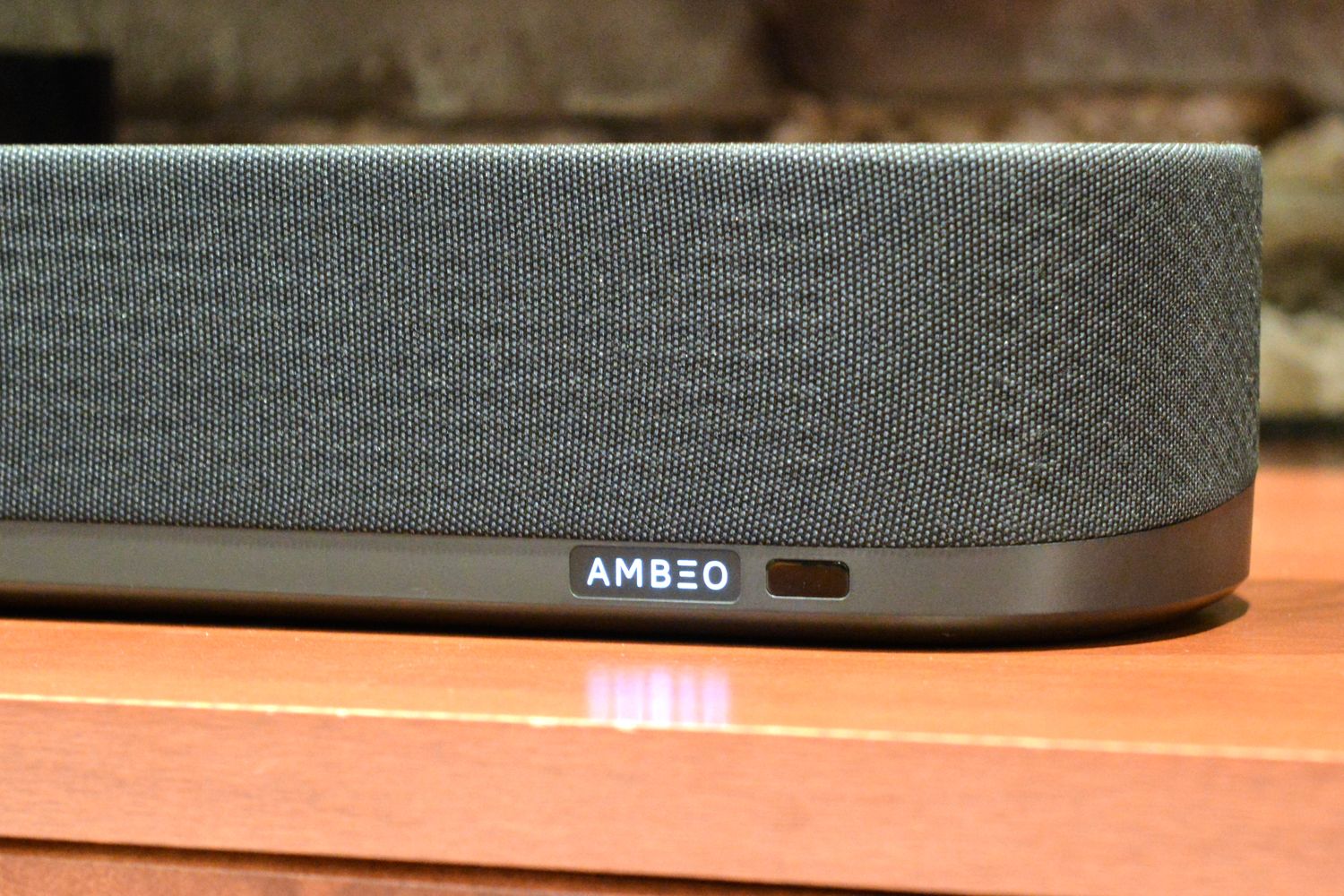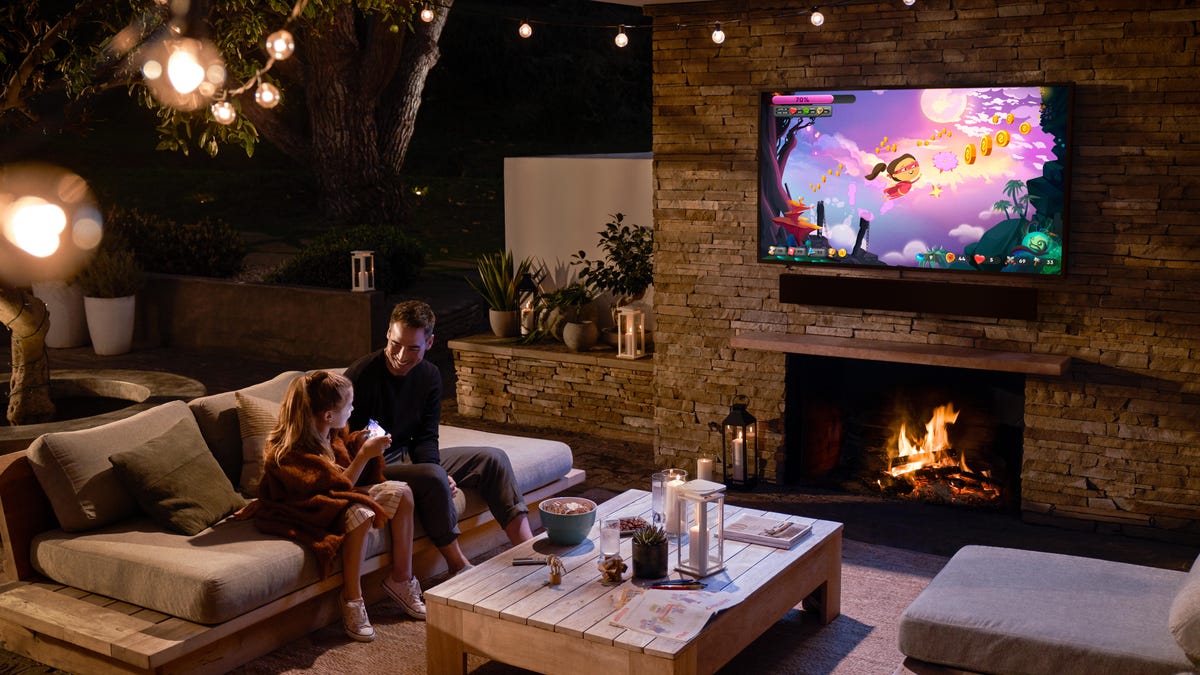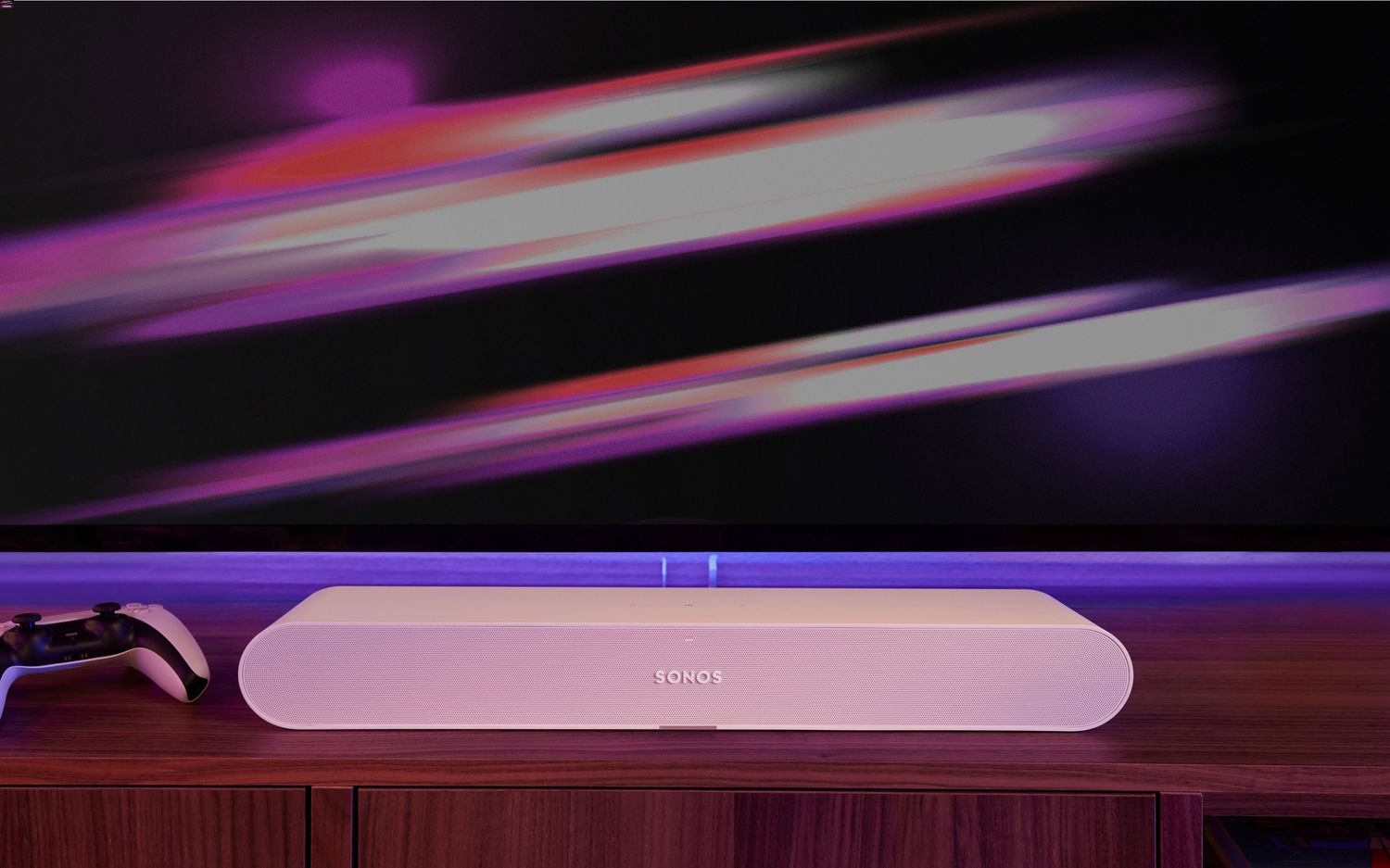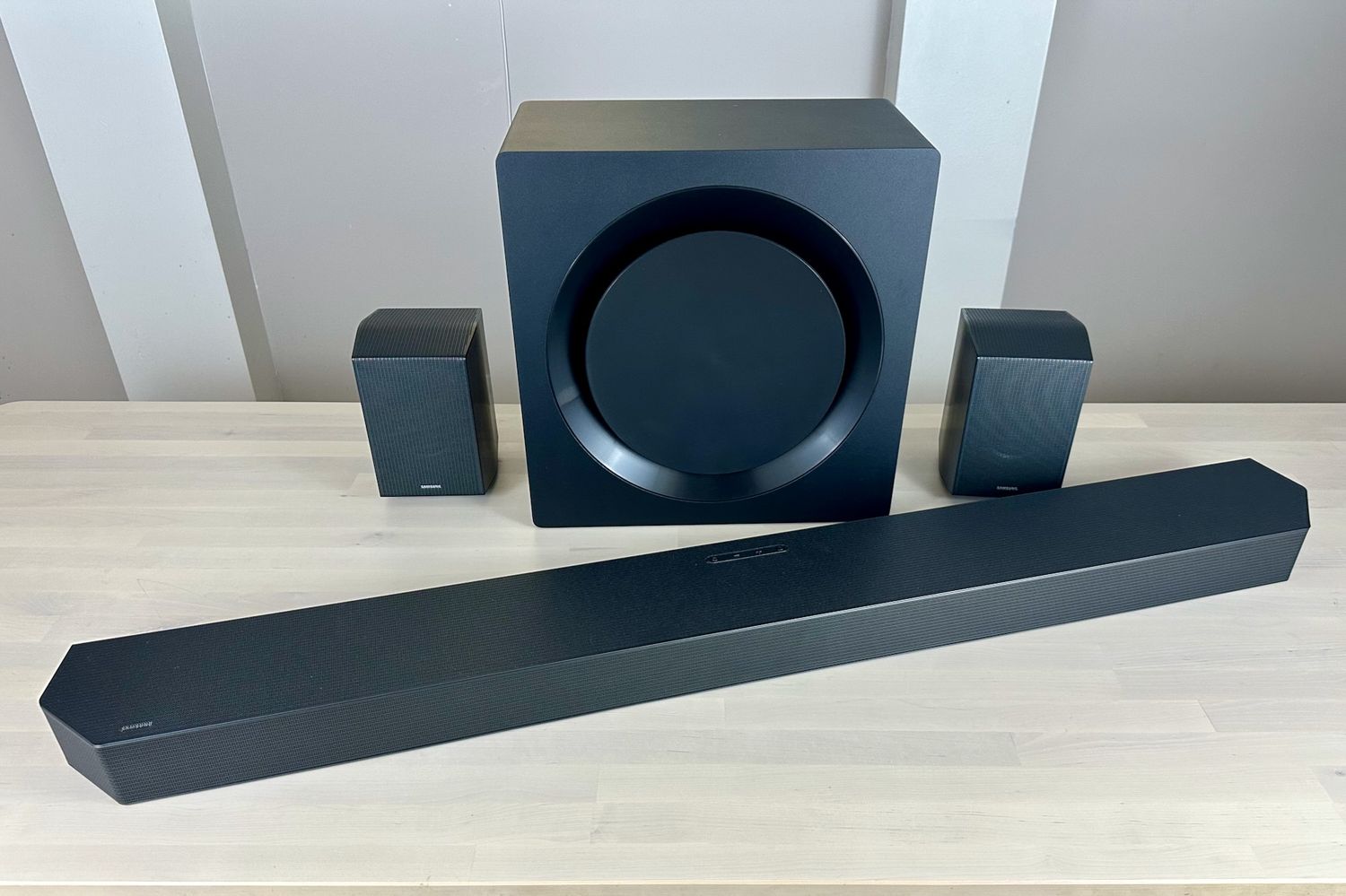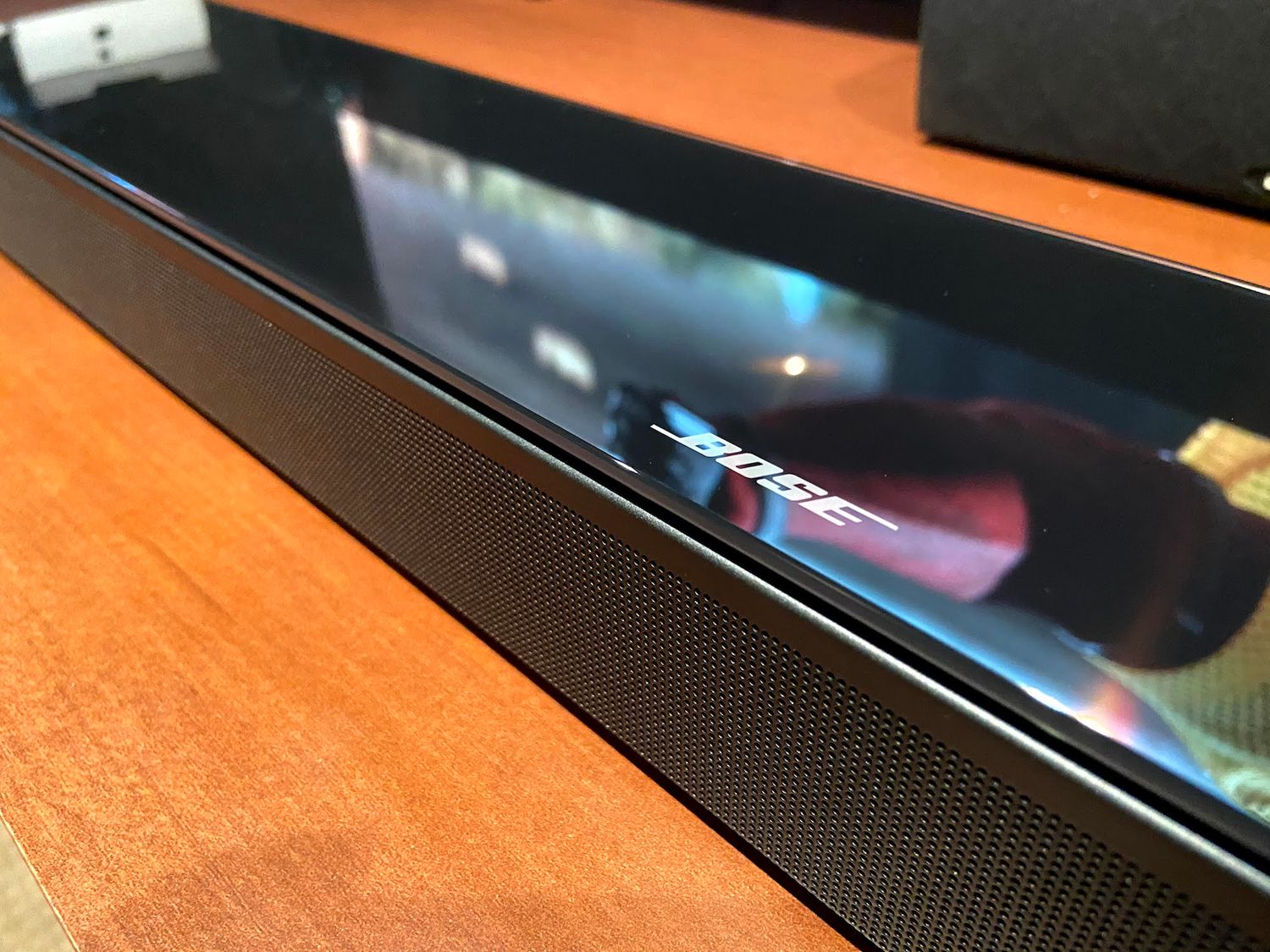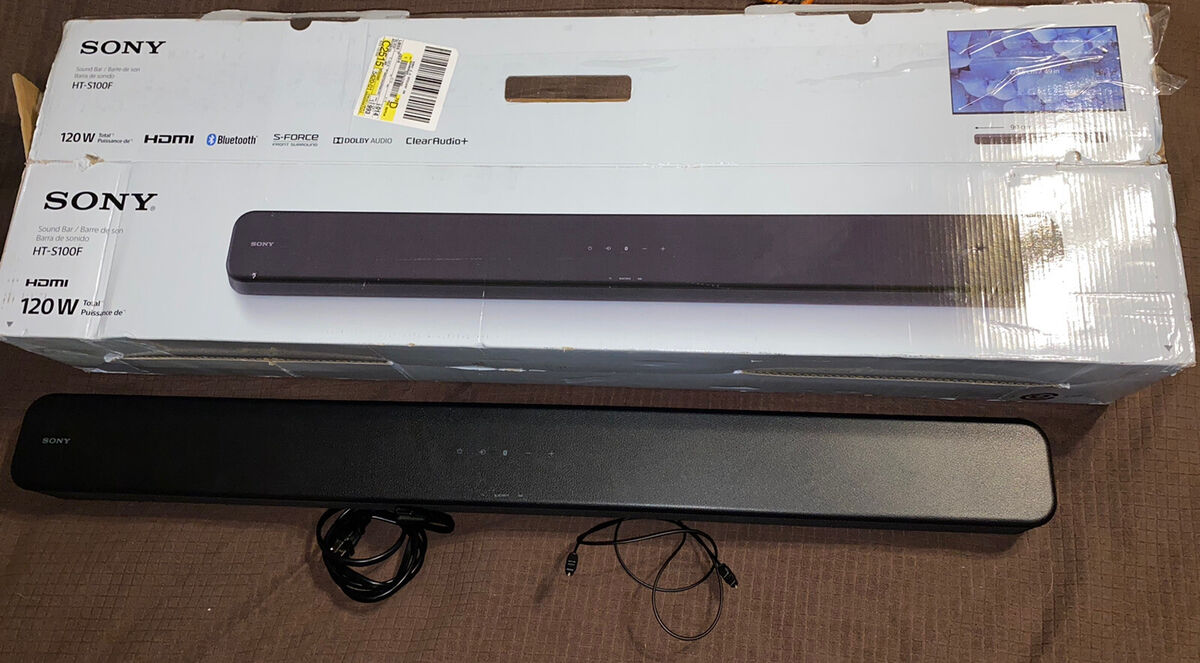Home>Production & Technology>Sound Bar>Why Does My Sound Bar Not Turn On With TV
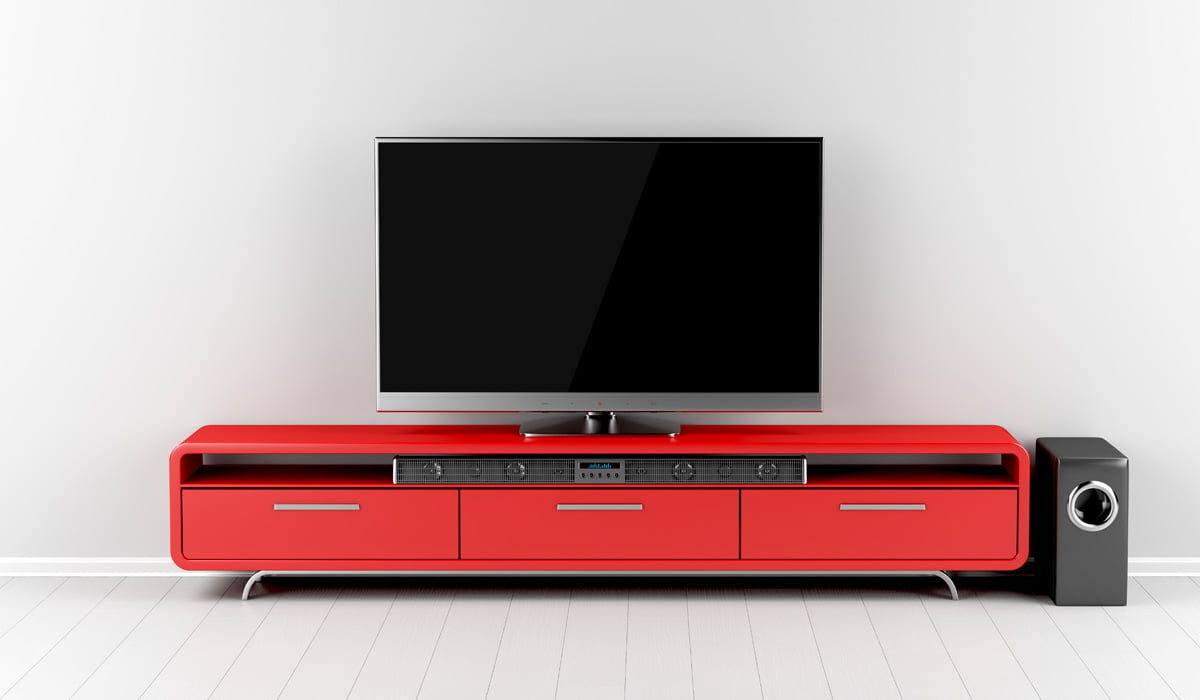

Sound Bar
Why Does My Sound Bar Not Turn On With TV
Published: December 27, 2023
Troubleshoot your sound bar not turning on with TV. Discover possible reasons and solutions for this issue with our helpful guide.
(Many of the links in this article redirect to a specific reviewed product. Your purchase of these products through affiliate links helps to generate commission for AudioLover.com, at no extra cost. Learn more)
Table of Contents
Introduction
Having a sound bar is a fantastic way to upgrade your TV’s audio quality and enhance your overall viewing experience. However, it can be frustrating when your sound bar refuses to turn on with your TV. This issue can leave you scratching your head, wondering what could be the cause and how to resolve it.
There are several common reasons why your sound bar may not be turning on with your TV. It could be due to power source issues, TV settings, compatibility problems, remote control issues, or even software glitches. In this article, we will explore these potential causes in detail and provide you with troubleshooting tips to help you get your sound bar up and running again.
Before diving into the troubleshooting steps, it’s important to mention that sound bars can vary in terms of design and features, so the specific steps and solutions may differ depending on the brand and model you own. However, the general principles outlined in this article should apply to most sound bars.
So, if you’ve been struggling with your sound bar not turning on with your TV, don’t worry! We’re here to help you figure out the underlying issue and get your audio system back in action. Let’s dive in and explore the possible solutions together!
Common Causes for Sound Bar not Turning On with TV
When your sound bar refuses to turn on with your TV, it can be frustrating to pinpoint the exact cause. However, there are some common reasons why this issue may occur. By understanding these causes, you can troubleshoot and resolve the problem more effectively. Here are some potential culprits:
- Power Source Issues: The first thing to check is the power source. Ensure that both your sound bar and TV are plugged into working electrical outlets. Sometimes, a loose power cable or a faulty outlet can prevent the sound bar from turning on.
- Connection Problems: Another common cause for the sound bar not turning on is a faulty or loose connection. Check the audio cable that connects your TV to the sound bar. Ensure that it is securely plugged into both devices. Additionally, make sure that you have selected the correct audio input source on your sound bar.
- TV Settings and Sound Bar Compatibility: It’s essential to verify that your TV settings are properly configured to work with the sound bar. Some TVs require specific audio settings or audio output formats to be enabled for the sound bar to function correctly. Also, ensure that your sound bar is compatible with your TV model, as certain combinations may have compatibility issues.
- Sound Bar Remote Control and Batteries: Check if the batteries in your sound bar remote control need to be replaced. Weak or dead batteries can prevent the sound bar from responding to the remote’s commands. Additionally, ensure that there are no obstructions between the remote and the sound bar.
- Software Glitches: Like any electronic device, sound bars can experience software glitches. In some cases, a simple reset can resolve the problem. Try turning off both your TV and sound bar, unplugging them from the power source, and waiting for a few minutes before plugging them back in and turning them on again.
- Firmware Updates: It’s crucial to keep your sound bar’s firmware up to date. Manufacturers often release firmware updates that can address software bugs and improve functionality. Check the manufacturer’s website or user manual for instructions on how to check for and install firmware updates for your specific sound bar model.
- Consult Manufacturer or Technical Support: If you have tried all the troubleshooting steps mentioned above and your sound bar still won’t turn on with your TV, it may be best to contact the manufacturer’s customer support or technical assistance. They can provide you with tailored guidance and solutions specific to your sound bar model.
By considering these common causes and following the appropriate troubleshooting steps, you can hopefully identify and resolve the issue preventing your sound bar from turning on with your TV. Don’t get discouraged; sometimes, a simple solution is all that’s needed to bring back the audio bliss to your entertainment setup!
Check Power Source and Connection
One of the primary causes of a sound bar not turning on with a TV is power source issues. It’s important to check the power source and the connections to ensure everything is properly set up. Here’s what you should do:
- Verify Power Cable: Start by checking the power cable of your sound bar. Ensure that it is securely plugged into both the sound bar itself and a functioning electrical outlet. If the power cable is loose or damaged, try using a different cable to see if that resolves the issue.
- Check TV Power Connection: Next, check if your TV is plugged in and turned on. Ensure that the TV’s power cable is securely connected to a working power outlet. Sometimes, a simple power connection problem with the TV can affect the sound bar’s functionality.
- Power Surges and Protection: If you’ve experienced power surges or outages recently, it’s possible that it might have affected your sound bar’s power supply. Consider using a surge protector or a power conditioner to protect your sound bar and other electronic devices from voltage fluctuations. These devices can help stabilize the power supply and prevent any future issues.
- Verify Audio Cable Connection: Check the audio cable that connects the TV to the sound bar. Make sure it is firmly plugged into the correct audio input/output ports on both devices. Sometimes, a loose or incorrectly connected audio cable can disrupt the power flow between the TV and sound bar, resulting in the sound bar not turning on.
- Test a Different Outlet: If you suspect that the power outlet you’re using might be faulty, try plugging your sound bar into a different outlet. This can help determine whether the issue lies with the power source or the sound bar itself.
By checking the power source and ensuring proper connections, you can eliminate any power-related issues that might be causing your sound bar not to turn on with your TV. If these steps don’t resolve the problem, it’s time to explore other potential causes.
Verify TV Settings and Sound Bar Compatibility
When your sound bar isn’t turning on with your TV, it’s worth checking the TV settings and ensuring compatibility between the devices. Here are some steps to follow:
- Audio Output Settings: Visit the settings menu on your TV and navigate to the audio or sound settings. Check if the correct audio output source is selected, such as the sound bar or external speakers. Some TVs have multiple audio output options, so make sure you’ve chosen the appropriate one.
- Audio Output Formats: In the TV settings, explore the audio output formats or audio mode options. Some sound bars might require specific audio formats like Dolby Digital or DTS. Ensure that the audio format selected on your TV matches the capabilities of your sound bar.
- Sound Bar Compatibility: Verify the compatibility between your sound bar and the TV. Refer to the user manuals or documentation for both devices to check if they are compatible in terms of audio connections and supported audio formats.
- HDMI ARC or Optical Connection: If you’re using an HDMI ARC (Audio Return Channel) or optical connection between your TV and sound bar, ensure that the respective ports on both devices are properly set up and enabled. This allows for two-way audio communication and can improve compatibility.
- Audio Delay Settings: Some sound bars offer adjustable audio delay settings to synchronize audio and video. If you notice a delay between the audio and video on your TV, try adjusting the audio delay settings on the sound bar or TV to eliminate any syncing issues.
By verifying the TV settings and ensuring compatibility between your sound bar and TV, you can address any configuration issues that might prevent the sound bar from turning on. Make sure to consult the user manuals of both devices for detailed instructions specific to your model.
If the problem persists even after these steps, don’t worry. There are still other troubleshooting methods to explore. We’ll cover them in the subsequent sections to help you get your sound bar up and running with your TV.
Verify Sound Bar Remote Control and Batteries
Another potential cause for your sound bar not turning on with your TV is an issue with the remote control or its batteries. Here’s what you can do to troubleshoot:
- Check the Batteries: Start by inspecting the batteries in your sound bar remote control. Ensure they are properly inserted and have enough power. Weak or dead batteries can cause the remote control to malfunction, preventing it from sending signals to the sound bar. Consider replacing the batteries with fresh ones to see if that resolves the issue.
- Remote Control Range: Make sure you’re within the appropriate range to operate the remote control. Some sound bars have a limited range for remote control functionality. Try moving closer to the sound bar and pointing the remote directly at it to ensure a clear line of sight.
- Obstructions: Check for any physical obstructions between the remote control and the sound bar, such as furniture or other objects. Clear any obstacles that might hinder the remote control signals from reaching the sound bar effectively.
- Remote Control Pairing: If the remote control has recently been replaced or reprogrammed, ensure that it is properly paired with the sound bar. Refer to the user manual of your sound bar for instructions on how to pair the remote control. Pairing is typically done by following a specific combination of button presses on the remote control and the sound bar.
- Alternate Control Methods: If the remote control continues to malfunction, check if your sound bar has alternative control methods such as built-in control buttons on the device or a mobile app for remote control. Use these alternative methods to turn on your sound bar and verify if it responds to the commands.
By checking the remote control and its batteries, ensuring the range and removing any obstructions, and verifying the pairing and alternate control methods, you can determine if the remote control is the cause of the sound bar not turning on. If the problem persists, there are still more troubleshooting steps to explore in the upcoming sections.
Reset Sound Bar and TV
If you’ve checked the power source, connection, and remote control to no avail, it’s time to try resetting both your sound bar and TV. Resetting can help restore the default settings and potentially resolve any software glitches causing the issue. Here’s how to do it:
- Power off both the sound bar and TV: Start by turning off both devices. Use the power buttons on the sound bar and TV, or unplug them from the power source.
- Disconnect all cables: Once the devices are powered off, disconnect all cables from both the sound bar and TV. This includes the power cables, audio cables, HDMI cables, and any other connections.
- Wait for a few minutes: Leave the devices disconnected for at least a couple of minutes. This allows any residual power to dissipate, ensuring a clean reset.
- Reconnect the cables: After the waiting period, reconnect all the cables securely. Ensure that each cable is plugged into the correct ports.
- Power on the devices: Plug the power cables back into the sound bar and TV, and turn them on. Wait for them to fully power up and establish the necessary connections.
- Test the sound bar: Try turning on the sound bar using the remote control or built-in buttons. If it powers on and functions as expected, proceed to test the audio output with your TV.
- Test the audio output: Set the audio output on your TV to the sound bar and play some content to verify if the sound is properly routed through the sound bar. Adjust the volume and ensure that the sound bar responds to the commands.
By performing a complete reset of your sound bar and TV, you can eliminate any software glitches or settings that might have been causing the issue. If the sound bar still fails to turn on with your TV, there are further troubleshooting steps to explore.
Check for Firmware Updates
Outdated firmware can sometimes cause compatibility issues and prevent your sound bar from turning on with your TV. Checking for firmware updates and installing them, if available, can help address such issues. Here’s what you should do:
- Identify the manufacturer: Start by identifying the manufacturer of your sound bar. This information can typically be found on the product itself or in the user manual.
- Visit the manufacturer’s website: Go to the official website of the sound bar’s manufacturer. Look for a support or downloads section on the website.
- Search for firmware updates: In the support or downloads section, search for firmware updates specifically for your sound bar model. Check if any firmware updates are available for download.
- Read the instructions: If a firmware update is available, carefully read the instructions provided by the manufacturer. Pay close attention to any specific steps or requirements mentioned.
- Download and install the firmware update: Follow the manufacturer’s instructions to download the firmware update onto your computer or another storage device, if required. Then, transfer the update to the sound bar according to the provided instructions. Make sure to follow the steps accurately to avoid any issues.
- Power cycle the sound bar: After installing the firmware update, turn off the sound bar and unplug it from the power source. Wait for a few moments, then plug it back in and turn it on. This power cycle can help ensure that the firmware update is applied correctly.
- Test the sound bar with the TV: Once the sound bar has powered on, test it again with your TV to see if it now turns on and functions as expected.
Regularly checking for firmware updates and keeping your sound bar up to date can help resolve compatibility issues and ensure optimal performance. If the sound bar still does not turn on with your TV even after updating the firmware, further troubleshooting steps may be necessary.
Consult Manufacturer or Technical Support
If you have tried all the previous troubleshooting steps and your sound bar still refuses to turn on with your TV, it’s time to reach out to the manufacturer or seek technical support. Here’s what you can do:
- Contact Manufacturer Support: Visit the official website of the sound bar’s manufacturer and look for a “Support” or “Contact Us” section. Use the provided contact information, such as phone numbers or email addresses, to get in touch with their support team.
- Provide Detailed Information: When contacting support, be sure to provide detailed information about the issue you’re experiencing. Mention the specific model of your sound bar, along with any troubleshooting steps you have already taken. This will help the support team better understand the situation and provide more accurate assistance.
- Follow their Recommendations: The manufacturer’s support team may ask you to perform additional troubleshooting steps or provide specific instructions based on your situation. Follow their recommendations closely and provide feedback on the results.
- Warranty Coverage: If your sound bar is still under warranty, inform the support team about it. They may provide guidance on how to proceed with repairs, replacements, or any other relevant warranty coverage. Keep your purchase receipt or any warranty documents handy for reference.
- Professional Repair Service: If your sound bar is no longer under warranty or the issue cannot be resolved through troubleshooting, the manufacturer may recommend professional repair services. They can provide you with information on authorized repair centers or suggest local technicians who specialize in sound bar repairs.
- Third-Party Assistance: In addition to manufacturer support, you may also seek assistance from third-party technical support forums or communities. Online forums dedicated to sound bars or audio equipment can be a valuable resource for troubleshooting advice from experienced users.
By reaching out to the manufacturer or technical support, you can tap into their expertise and potentially find a solution to the sound bar not turning on with your TV. Remember to remain patient and cooperative throughout the process, as it may take some time to resolve the issue.
With their guidance, you can hopefully get your sound bar back up and running with your TV, allowing you to enjoy high-quality audio with your favorite shows and movies once again.
Conclusion
Experiencing issues with your sound bar not turning on with your TV can be frustrating, but it doesn’t necessarily mean there’s a major problem. By following the troubleshooting steps outlined in this article, you can often identify and resolve the underlying issues.
Start by checking the power source and connection to ensure everything is properly set up. Verify the TV settings and sound bar compatibility, as well as the remote control and its batteries. If needed, try resetting both the sound bar and TV to restore default settings. Check for firmware updates to ensure compatibility and optimal functionality.
If all else fails, don’t hesitate to reach out to the manufacturer or seek technical support. They can provide you with guidance specific to your sound bar model and help you further troubleshoot or explore repair options if necessary.
Remember to always consult the user manuals and follow the manufacturer’s instructions throughout the troubleshooting process. Each sound bar may have specific steps and requirements, so it’s essential to refer to the documentation provided.
By approaching the issue systematically and patiently, you can increase the chances of effectively resolving the problem and getting your sound bar to turn on with your TV once again.
Lastly, don’t forget to enjoy the immersive audio experience that a functional sound bar can bring to your TV viewing. Sit back, relax, and revel in the enhanced sound quality that takes your entertainment to the next level.

